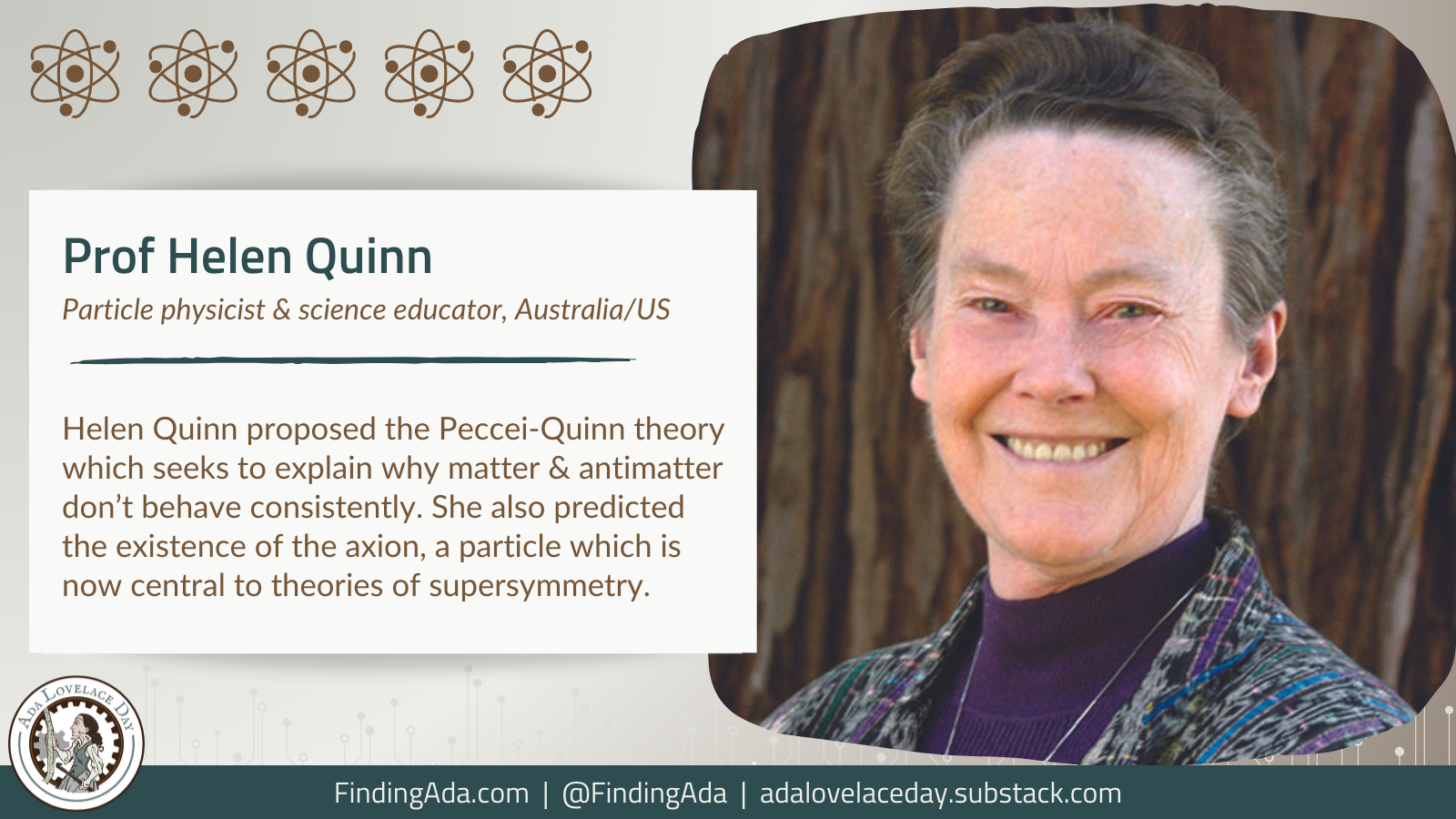Professor Helen Quinn
Prof Helen Rhoda Arnold Quinn is a particle physicist and educator. Now professor emerita of particle physics and astrophysics at Stanford University, she has made momentous contributions to theoretical physics. These include the Peccei-Quinn theory, a famous proposed solution to the strong charge-parity (CP) problem. After retiring from academia, Quinn has dedicated her career to strengthening science education in schools.
Born on 19 May 1943, Quinn grew up in Melbourne. She started an undergraduate degree in meteorology at Melbourne University when she was just 16, transferring to Stanford a year later when her father took a job in California. At Stanford she changed her major to physics, gaining her PhD in theoretical physics in 1967.
Quinn relocated to Hamburg for postdoctoral work at the DESY (the German Synchrotron Laboratory) before spending seven years at Harvard University, where she became involved in particle theory. Alongside Howard Georgi and Nobel Prize winner Steven Weinberg, Quinn demonstrated that three apparently different types of particle interactions (strong, electromagnetic, and weak) become very similar in extremely high-energy processes. This suggests they may actually be three aspects of a single unified force.
When Quinn returned to Stanford, she became professor of physics in the Stanford Linear Accelerator Laboratory (now the SLAC National Accelerator Laboratory). In 1977, she formulated the Peccei-Quinn theory with her colleague Roberto Peccei. They were trying to solve a longstanding mystery of particle physics: why does CP-symmetry (the symmetry between matter and antimatter) break in weak interactions, which drive nuclear decay, but not in strong interactions, which hold matter together?
Peccei and Quinn’s solution suggested that the universe may be near-symmetrical. Their model has since been superseded, but it remains one of the best-known and most influential proposed solutions to the CP problem. The Peccei-Quinn theory also predicted the existence of a new particle, the axion, which is used in some theories of supersymmetry and cosmic inflation. Some physicists believe the axion could explain dark matter.
Despite her trailblazing research, Quinn had always been interested in education; as an undergraduate, she assumed she would end up a physics teacher. In 1987, she co-founded and served as president of the Contemporary Physics Education Project (CPEP), a group of teachers, educators and physicists that aims to enhance how the subject is taught. Quinn helped design CPEP’s first product, a chart for particle physics teaching similar to the periodic table, which became a common sight in classrooms across the U.S. and worldwide.
In 2003, Quinn was elected to the US National Academy of Sciences (NAS), which enabled her to join its Board on Science Education (BOSE). She was appointed BOSE’s chair not long before retiring from active physics research in 2010, and held the role until 2014.
As BOSE chair, Quinn spearheaded the production of the “Framework for K-12 Science Education”, which formed the basis of the Next Generation Science Standards. These standards set out what students should understand about science throughout their time at school. Since 2013, they have since been adopted by dozens of US states and proved influential around the world. Quinn has said her ultimate goal is to facilitate education that creates “citizens who can look at a problem in their community and think like a scientist… I want high school and college graduates with capabilities that employers want, whether they come from well-educated families or not.”
Quinn’s work as a particle physicist has been honoured by the International Center for Theoretical Physics’ Dirac Medal in 2000; the American Institute of Physics’ Compton Medal in 2016; and the Benjamin Franklin Medal in Physics in 2018, among others.
Further Reading
- Helen Quinn, Wikipedia
- Helen Quinn, Stanford Profiles
- Helen Quinn, David Zierler, American Institute of Physics, 14 August 2020
- Roberto Peccei and Helen Quinn, Driving Around Stanford in a Clunky Jeep, Thomas Lin, Quanta, 15 June 2017
- A Wormhole Between Physics and Education, Thomas Lin, Quanta, 18 October 2016
Written by Moya Crockett, with thanks to Stylist for their support.
